

Despite the limited facilities of the venue, the artworks and documents that are on display in the Imre Pán Memorial Room allow us to draw a relatively full picture of the activities of Imre Mezei (better known by his assumed pen-name Imre Pán), and also of the significant contribution that he made to contemporary art life both in Hungary and in France.
Born in 1904 in Budapest, Imre Pán demonstrated a strong affinity towards art already at an early age. At twelve or thirteen, in sharp contrast with his school friends who spent all their pocket money on sweets, he saved up the wages he had earned as an extra in the Budapest Opera House to buy art magazines and drawings. In partnership with his brother, Árpád Mezei, he founded his first Dadaist magazine, IS, at the age of twenty. The fact that the magazine only saw two editions did not discourage him. In 1931 he launched another Avant-garde magazine, Index. In the meantime, he acted as the underground distributor of the banned art and literary magazine MA, which Lajos Kassák produced in Vienna. After 1926 he worked at the magazine Színházi Élet (The Stage World), taking charge of the cinema section. His articles and poems were published in Kassák's newspapers Dokumentum (Document) and Munka (Work). In 1937 he launched a film magazine Sztár (Star), which stayed in business for five years.
In 1930 he married Magda Hauswirth, the excellent book illustrator and well-known caricaturist who also worked for Színházi Élet at the time. In 1936 Imre Pán spent a few days in Germany, which was all he needed to realize what had been afoot in Europe, and also what danger was in store for Hungary. Since he was unable to persuade his family of the scale of the calamity, they all stayed in Budapest, and although they lived to see the country's liberation, it cost them dearly in terms of personal sufferings. The worst period was those few months that he had to spend hiding behind the shelves on the gallery of Sztárbolt (Star Shop), the bookshop that he had been managing since 1939. As long as the intensity of the fighting permitted it, the young painter László Hegedűs and the widow of the writer László Szalay supplied him with food and water during the siege of Budapest. Despite the painful experiences of the past years, he set to work with unabated vigour after the War, with the result that his most important and lasting achievements in Hungarian art life were associated with the period between 1945 and 1948. The earlier mentioned bookshop (at 27 Andrássy út) was reopened under the name Művészbolt (Artists' Shop), and within a brief period became an important intellectual hub (and also an exhibition venue), which was frequently visited by writers, poets, philosophers and artists. In Béla Tábor and Stefánia Mándy's flat in Haris köz, where the group frequently met, the idea of organizing exhibitions and lectures was gradually taken up by the participants. The founding document of the Európai Iskola (European School) was drafted on October 13, 1945, signed by Imre Pán, Árpád Mezei, Pál Gegesi Kiss, Lajos Kassák and Ernő Kállai, as well as the artists who joined in. It was largely due to the integrative personality of Imre Pán that these people of very different temperament, who subscribed to a variety of worldviews and artistic convictions, were able to agree on a common goal and could function as a group. (The readers will find further proof of his integrative personality later on in the essay, in connection with his successes to mobilize artists, writers and poets in France some years later.)
The meetings were marked by heated yet productive debates. They summed up their goals in one of their manifestos as follows: "Until now the European ideal has been equated with the Western-European ideal. From now on we shall have to consider Europe Proper. The new Europe can only be constructed through the synthesis of West and East." One cannot help admiring the timeliness of this idea at the present moment in history! Although the European School only functioned for three years, it exerted a profound influence not only on contemporary Hungarian art, but also on the art of the subsequent generations. The movement brought new dynamism and enthusiasm, as well as a conceptual revolution to Hungarian art; but even more importantly, it was able to construct a bridge between the cultural and art life of Hungary and other nations. The works of Romanian and Czech artists were shown in a separate exhibition; drawings by Arp, Chirico, Kandinsky, Laurens, Matisse and Miro were on display in the Művészbolt; and in April 1947 there was a joint French-Hungarian exhibition, where the members of the Hungarian group in Paris - István Beöthy, Albert Bertalan, Vera Braun, József Csáky, Tibor Gertler, Imre Gömöri, Grossova (Erzsi Galamb), István Hajdú, Zsigmond Kolozsváry, László Lengyel, Ervin Marton, Bertalan Pór and Béla Vörös - showed their works next to those of Bonnard, Bauquier, Braque, Burtin, Chevalier, Fougeron, Gimond, Gromaire, Laurencin, Léger, Lhote, Maillol, Matisse, Picasso, S. Roger and Vuillard. It was hardly a coincidence that Corneille, who spent a few months in Budapest in 1947, and who was also given an opportunity to show his compositions, discovered the most important Western-European movements and tendencies precisely here, in Budapest. In this respect he received the greatest help from Imre Pán, whom he described as follows later: "He knew everything. He proved very useful for me, because he showed me so much." The friendship of Imre Pán and Árpád Mezei proved equally significant for the French artist Jacques Doucet: it was through them that he discovered the art of Klee and Miro. The thirty-eight exhibitions organized during the three years that the European School was in existence gave ample opportunity to the public to discover the works of the great predecessors - Lajos Vajda, Imre Ámos, Gyula Derkovits, István Farkas, Lajos Tihanyi and Tivadar Csontváry Kosztka -, as well as the compositions of the established generation - Margit Anna, Jenő Barcsay, Endre Rozsda, Lajos Barta, Dezső Korniss, Endre Bálint, Béla Bán, Jenő Gadányi, Piroska Szántó, Ernő Schubert, Béla Czóbel, Tibor Vilt, Tamás Lossonczy, Ferenc Martyn, Erzébet Forgács-Hann, József Jakovits and Júlia Vajda and the emerging new generation - Simon Hantai, Károly Farkas, Pál Farkas, György Hegyi, Zoltán Nuridsányi, Józsa Auguszt and others. The exhibitions came complete with guided tours and group discussions held on Sundays, with most of the credits for the organization and the running of the events going to Imre Pál, whose generous support to the artists included his regular purchasing their works.
After the break-up of the European School, which followed the introduction of hard-line measures in cultural politics and the dictatorial regime, and following the closing down of Művészbolt, Imre Pán worked as a sales assistant in a bookshop. Then he engaged in the edition of tourist guides, and eventually ended up writing them. He set an example how to get over one's daily problems and how to preserve one's intellectual independence from external circumstances. Neither was he paralysed by embitterment nor did he not try to climb the social ladder through political means - as some of the former members of the European School did. For him the world changed only outside the boundaries of his home. Considering poetry, literature and art as an indispensable part of life, he tried to bring others around the same view. As Péter György pointed out in his book Az elsüllyedt sziget, The Dorozsma utca flat, where Imre Pán and Árpád Mezei lived, became an important meeting place of the progressive intelligentsia. In his spare time, Imre Pán continued to focus on art and writing: among other things, he wrote "The History of the Isms" in partnership with Lajos Kassák. Parts of the book were published in 1957 in the magazine Nagyvilág, while the publication of the entire book had to wait until after the death of both men, in 1975, missing out some parts of the original text and omitting Imre Pán's name from the title page.
Imre Pán's activities in France after 1957 were in direct continuation of his earlier work, and just as significant. He decided to leave Hungary, because here he felt isolated and shut off from the world and from Europe, and was unable to dedicate all his energies to the passion that engaged all his interests: art. At fifty three he was no longer a young man, when he started his life all over in Paris, full of determination and energy. He tried to make contact with the artists who lived there, most notably Corneille, Jacques Doucet and Marcel Jean, as well as the Hungarians of Paris: István Hajdú, Anton Prinner, Árpád Szenes, Victor Vasarely and Endre Rozsda. He organised his first exhibition in February 1958 in the gallery La Main Gauche (1, rue Thérése). Entitled Miroirs de papier (Mirrors of Paper), the group exhibition featured the drawings of Arp, Braque, Léger, Max Ernst, Miro, Goncharova, Larionov, Corneille, Marcel Jean and others, alongside the works of the Hungarian artists, Lajos Vajda, Endre Rozsda, Árpád Szenes, Margit Anna, Béla Czóbel and István Hajdú. Judging from the fact that the gallery continued to demand his services, the exhibition must have been deemed a success. In June he organized an exhibition entitled Les partenaires artistiques (Artist Partners), in which he wanted to demonstrate the different ways in which painters and sculptors living together influence each other's work through the examples of Sonia and Robert Delaunay, Sophie Tauber-Arp and Hans Arp, Viera da Silva and Árpád Szenes, Francoise Gilot and Picasso, among others. Still in the same year Imre Pán arranged another important event in the gallery La Main gauche. In October Margit Anna's retrospective exhibition was opened, serving as further proof of the importance Pán attached to the support of high-quality Hungarian art and to its presentation to foreign audiences. In addition to demonstrating how well Imre Pán was able to exploit the opportunities afforded by the free world, the group exhibitions held in 1959 in London (Children Art Gallery) and in San Francisco (Lucien Labaudt Art Gallery), which were designated to show the works of the École de Paris, also proved that he used every available means to open up further possibilities for the deserving Hungarian artists. He "smuggled" into the École de Paris' material two compositions by Béla Kádár in San Francisco, and one each by Margit Anna and Dezső Korniss in London. In 1960 he managed to secure the prestigious gallery of Denise René for showing the works of Lajos Kassák, a resident of Hungary at the time. Then in 1970 he presented the works of Béla Kádár, his good friend who had long been dead by then, to the French audience in the gallery of Jean Chauvelin. After 1961 he established cooperation with the gallery Le point Cardinal (3, rue Jacob), acting as its art manager for some time. In 1962 it was here that he showed the collages of the then little-known Vasarely, followed by the works of Matta, Corneille, Hartung and Zoran Music. Still in the same year he organised an exhibition in Galerie Mesure for Marcelle Cahn, the excellent painter who temporarily disappeared from the public's eye, successfully re-establishing her reputation. Between 1963 and 1970 he organised, in the gallery La Roue, a series of group exhibitions under the title Zero-point with the participation of Doucet, Coppel, Poliakoff and Sonia Delanuay, to name but a handful of the more important artists. The title of the series of exhibition was in reference to the small size of the pictures. The reason why such format appealed to Imre Pán was that in his view, in an embryonic form, a small picture already contained everything that the final, large-scale composition would eventually reveal. As he put it in his introduction, the exhibition called attention to the grandness of the small.
Imre Pán was able to establish an intellectual centre similar to the one in Budapest. His modest flat on the sixth floor of a building, with no elevator, in rue Alexendre-Parodi, located in the suburban region near the canal of Saint Martin, rapidly became the favourite meeting place of writers, poets and painters who came for discussions reaching well into the night. In his memoirs, one of his painter-friend, Francois Jousselin, wrote the following: "...I felt that I belonged to an extended family, which would have been nothing but a shapeless cloud without him." He received his guests on a pre-appointed day of the week, because as a rule he rarely stayed at home. He rushed from one gallery to the next with portfolios full of drawings under his arm, trying to procure exhibitions for the artists he esteemed highly. In his remaining time, he either visited the studios of young painters or attended the friendly gatherings of artists, writers and philosophers. Among other places, he frequently turned up in the home of the Portugese couple, the painters René Bertholo and Lourdes Castro, where members of the art group KWY held their regular meetings.
In addition to organizing exhibitions, Imre Pán also found some time to engage in drawing, painting and making collages. Furthermore, he wrote poems, short stories and art criticism, first in Hungarian and then, on discovering the difficulties of translating the original ideas into another language, also in French. While in Amsterdam in 1960, he wrote a treatise on Corneille; then in 1970, in contribution to a catalogue for an exhibition in Darmstadt, he published his essay on the old and contemporary masters of drawing. It was also in 1970 that, on a request from the University of Aix-Marseille, he completed an analytical piece about the relationship between art and scholarship, entitled A Commentary of the Century.
As little as three years after his arrival in France, he already produced his own art publications. Entitled "Signe", his first series comprising 21 leaflets came out in 1960. Enclosed in every leaflet, there was a numbered print by an artists, accompanied by Imre Pán's study of the same person's art. The first issue of the series introduced Etienne Hajdu (István Hajdú), to be followed by Corneille, Paolo Boni, Doucet, Boumeester, Cottavoz and Vasarely, among others. Still in 1960, he launched another series, of 14 parts, entitled The Art of Drawing. The essay he published on a selected artist in each one of the issues came complete with an original drawing or a collage by the same person, dedicating two leaflets for both Árpád Szenes and Victor Vasarely.
Relying strictly on his own judgment, he presented artists in these bibliophilic publications, which are now considered rarities, who were not as well-known then as they are now. His excellent judgment has been confirmed by the verdict of posterity. In addition to their aesthetical values, these publications merit praise for spurring artists on to be more productive.
In Morphémes, the magazine launched in 1963 and staying in existence until 1970, the writing of such philosophers, poets and artists were published, each accompanied by graphical supplements, as Descartes, Henri Bergson, Árpád Mezei, Schwitters, Léger, Dubuffet and Giacometti, for example. The first two issues of the series entitled Mini-Museum came out in 1971 and 1972, respectively, featuring the art of Victor Vasarely and Marcelle Cahn, complete with Imre Pán's introduction. This series, along with the quarterly magazine Préverbes (Prepositions) that he edited already from his sickbed, had to be terminated due to Imre Pán's death in the spring of 1972.
According to the evidence of the catalogue accompanying the exhibition dedicated to his editorial activities, which was held in 1996 in Alés (with his second wife and aide Mireille Kastler's cooperation), Imre Pán produced 145 publications; in view of both the extremely short time that was available to him, a mere twelve years, and his own financial circumstances, this seems an almost incredible achievement. Although he had no money, his editorial activities were impressive; and although he had no gallery, his name is associated with some of the best exhibitions. This confirms the point that his work in Paris was, indeed, the direct continuation of his activities in Hungary. His entire life was spent in the service of art and the artists.
The Memorial Room located within the Deák Collection of the Városi Képtár of Székesfehérvár offers a summary view of his complex activities.
Júlia Cserba
 |
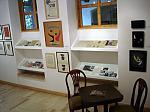 |
 |
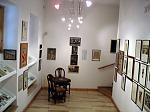 |
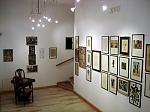 |
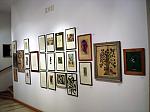 |
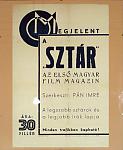 |
 |
AJÁNLÓ
KIÁLLÍTÁSOK
- Akvarellek Fehérváron (Pelikán Galéria)
- Deák Dénes gyűjteménye (Városi Képtár)
- Moskovszky-gyűjtemény (Hetedhét Játékmúzeum)
- Réber Gyűjtemény (Hetedhét Játékmúzeum)
HÍREK
- Interaktív, 360°-os panorámakép (Hetedhét Játékmúzeum)
- Interaktív, 360°-os panorámakép (Városi Képtár)
- Interaktív, 360°-os panorámakép (Pelikán)
- A játék fiatalít! (Hetedhét Játékmúzeum)
- Projektterem (Városi Képtár)
- A Diák--Deák Galériáról (Városi Képtár)
- Múzeumi élmény zárva tartásunk idejére -- frissítve (Hetedhét Játékmúzeum)
- Moskovszky Éva gyermekkora óta szeretettel őrzött tárgyai (Hetedhét Játékmúzeum)
- Réber-kiállítás (Hetedhét Játékmúzeum)
- interaktív játék készül -- az Open History együttműködésével (Hetedhét Játékmúzeum)
- Gyűjteménygyarapodás! (Hetedhét Játékmúzeum)
- A Pelikán Galéria 2024-es évi kiállítási terve (Pelikán)
- Újra látogatható -- frissítve (Városi Képtár)
- Kóré -- sajtófigyelő (Városi Képtár)
- Akvarellek Fehérváron -- frissítve (Pelikán)
- Székesfehérvár az értékes Moskovszky-gyűjtemény tulajdonosa! (Hetedhét Játékmúzeum)
- Ősz (Hetedhét Játékmúzeum)
- János bácsi vegyeskereskedése (Hetedhét Játékmúzeum)
- Téli Tárlat 2024 (Pelikán)






